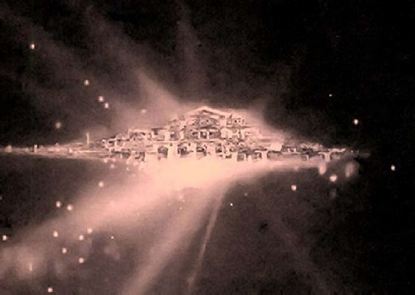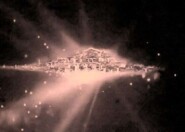По всем вопросам обращайтесь на: info@litportal.ru
(©) 2003-2024.
✖
SCIENCE AND TECHNOLOGY XXI: New Physica, Physics X.0 & Technology X.0
Настройки чтения
Размер шрифта
Высота строк
Поля
Commonly, physical machines are understood as devices having an input, an output and a mechanism effecting force and motion-modifying functions, linear motion to rotary motion or vice versa.
The special class of technological machines, prime movers, has as the input the force, power and energy from a natural force, moving water, air currents, mineral resources of heat, coal, gas, oil, uranium, etc., to transform it into mechanical forces. Nuclear reactors and internal-combustion engines as well as windmills, water-wheels, turbines and steam engines are all prime movers.
In general, for the physical machines, the five key groups are traditionally distinguished:
simple devices/ machine elements (the lever, wedge, wheel and axle, incline plane, pulley, and screw);
prime movers (eg, windmills, turbines, engines, fission reactors, or fusion reactors);
generators (eg, thermal, electric, hydraulic or pneumatic);
motors (eg, thermal, electric, hydraulic or pneumatic);
operators (eg, appliances and conveying machines).
The instrumentation equipment in turn involves measuring of all kinds of natural phenomena. Among the equipment are the instruments measuring and monitoring physical and chemical properties of a substance, as well as the biomedical instruments, like the X-ray machines, the CAT and NMR scanners.
A second category is sensors, devices detecting any energy change to turn it into a measurable or recorded signal. The controls consist of valves, governors, switches, motors, gears, levers, pulleys, power screws, power chain drivers, and other like mechanisms.
The transducers underlie all measuring, analytic, monitoring, and controlling tools and instrumentation, and they are classified according to the form of energy to be transformed. The transducer contain a transforming element by which converts any kind of input energy into output energy, mechanical, thermal, magnetic, electric, nuclear, gravitational, or chemical. Or, the transducers produce output signal, as voltage, current, displacement, resistance, temperature, force when subjected to a stimulus – radiation, heat, sound, strain, vibration, pressure, acceleration, voltage, and force.
The class of computers as a group of discrete state electronic devices falls within the physical systems able to receive, store, transform, and modify information in all its forms (raw data, data structures, expertise, and knowledge) and formats (text, video, voice, graphics), as well as to control machinery.
The telecommunication systems are devices and techniques to transmit information in the form of voice frequencies, telegraph messages, television programs, or digital data via wire, radio, space satellite, or computer networks, like the Internet.
But the pinnacle of the energy transforming devices looks to be a complex mechanical system integrating machines of all major categories as one functional unit. It is technically feasible because the direction of energy transformation in all the main energy conversion devices and systems comes to be reversible: any machine can have energy flow in either direction.
For instance, for thermoelectric devices, it is physically lawful to convert thermal power to electric power and vice versa. Or another near example, in electromechanical machines, mechanical energy may be converted into electrical energy realized in electrical generators as well as electrical energy into mechanical power implemented in electric motors. Or, it might be chemo-mechanical systems, such cars and jet engine airplanes, transforming the explosive effect of gasoline to power the wheels rotation or to provide a thrust by the reaction force of a powerful jet of heated gas.
The biggest issue of Technology 1.0, with its machinery, techniques and mechanisms, design and inefficiency, is that they are not in any ways smart or intelligent, but waste-making technologies. Such technology is conducive for most ecological problems, as the wastes and products of technical processes are polluting the environment and violating the natural balance of natural forces of regeneration and reversibility.
Technology X.0 is without polluting the ocean with radioactive waste of nuclear plants or the atmosphere by combustion products of transportation systems and industrial plants, like controlled thermonuclear fusion systems or electro-mechanical transportation.
It is about a new class of machines, Reversible Machines, preserving a healthy environmental balance, with the optimal design and efficiency for converting natural forces of gravitation, heat, electromagnetism, chemical and nuclear reactions, or quantum gravity.
Of all sorts and types of machines, the most desired are reversible intelligent mechanisms capable of optimal closed-loop conversion, transfer, positioning and processing of materials, energy and information of any of various forms, as well as possessing the locomotion of any types: aquatic, fossorial, terrestrial, aerial, and space.
For, it appears the final cause of machine technology is to create universal machines both guided by feedback control mechanisms and capable to intelligently behave in a changing world: to map (perceive) environments, to have plans (beliefs), to reason (think) thoughts, solve problems, experience emotions, and achieve goals of any complexity.
The idea of a universal transformer has long been served for the engineers as the technological Holy Grail or the ideal model of machines. The universal transducers or reversible machines, as dynamo-electric machines or MHD machines, essentially revolve around the reversibility law. For a basic aspect of reversible automata is the rule that the force (energy) conversion direction runs backwards, turns the other way round, transforming mechanical energy into electrical energy, as well as electrical power into mechanical motion.
Through the reverse input function system, the universal automaton becomes a self-governing and self-operating force/energy/ information converting machine, regulating its behavior in different real circumstances by controlling its outputs in conformity to a set of standard programmed values stored in it, such as AI computing programs. Then, generally, the universal operator will involve all four categories of machines integrating them as one unit:
• reversible machines as power and motion source;
• transducers as the sensing instruments, controlling mechanisms, and actuating devices;
• the AI based reversible computers as the decision element storing all the basic world knowledge and activating the control system;
• the Future Internet of Everything as a worldwide digital network resource (Abdoullaev, A. (2008). The Knowledge Society Applications: The RRR Language Machines. IGI Global; http://www.igi-global.com/bookstore/chapter.aspx?titleid=28319).
Technology X.0 deals with interdisciplinary physico-technical sciences, emerging technologies, sophisticated technical innovations and complex cyber-physical ecosystems, as Future Internet of Everything, Encyclopedic AI, Universal Transformers, Intelligent Industry, or Technological Human Settlements of the Future, like as Intelligent Nations or Smart Green Cities.
Technology X.0 is about an intelligently expanding human environment and big quest to explore the depths of an infinitely wonderful physical universe.
The Prospects of Emerging Technologies
The emerging technologies should be in line with the philosophy of New Physics and Technology X.0.
The most advanced technologies and breakthrough innovations and revolutionary applications are to reversibly convert natural forces, chemical, thermal, electrical, magnetic, electromagnetic, nuclear, gravitational and mechanical, in a closed loop, with zero-waste of energy.
The level of development of future technology and social communities is the capacity to control the forces of nature as according to the Great Schema of Forces:
Prime Force (ToE)::
Quantum Gravity Forces (Space Curvature, Standard Model of Cosmology; Electronuclear Force (GUT, Standard Model of Particle Physics)::
Strong Interaction (SU (3); Electroweak Interaction (SU(2) x U(1))::
Weak Interaction and Electromagnetism U(1em)::
Magnetism and Electricity::
Non-Fundamental Forces (contact forces, elasticity, viscosity, friction, pressure, etc.)::
normal force,
friction,
tension,
elastic forces,
continuum mechanics forces of pressure,
drag and stress,
fictitious forces coming from non-inertial reference frames,
the centrifugal force,
the Coriolis force,
general relativity gravity.
Accordingly, the top intelligent civilizations have extraordinary power of harnessing the Quantum Gravity Force, as in the hypothetical “Haven City of God” simulated by the NASA image on the book title page.
The future technological sciences, emerging technologies and technology x.0 advancement are presented in the SUPPLEMENT 1.







